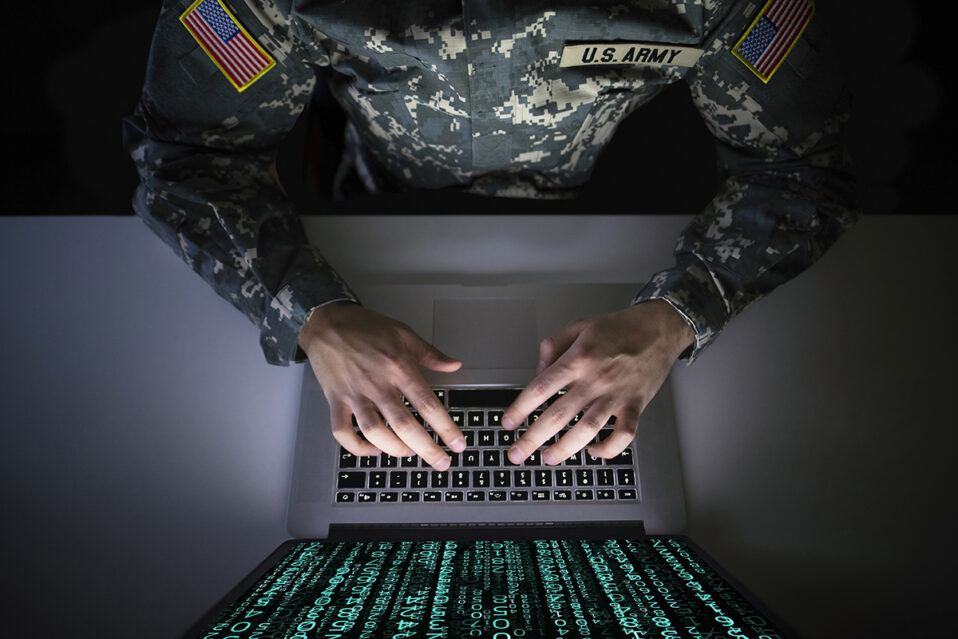Despite its status as home of U.S. Cyber Command, Fleet Cyber Command, Marine Corps Forces Cyber Command, the National Security Agency, Defense Information Systems Agency, Cyber National Mission Forces and other organizations focused on cyberspace, Fort George G. Meade lacks a significant designation when it comes to 21st Century defense and warfare. It is not recognized as a Power Projection Platform (PPP).
Fifteen other Army installations within the continental United States have been deemed key to American defense in four other domains (land, sea, air and space) and, consequently, have been designated as PPPs. Those installations are expected to facilitate the deployment of high-priority personnel and equipment to address national security threats. In return, the Department of Defense strives to ensure the installations have adequate resources to support ongoing, critical defense and the ability to tap additional resources during periods of heightened threat.

Fort Meade — the center of America’s cybersecurity forces — is not a PPP. Some leaders within the Fort Meade Region believe that should change.
“It is important that the Army continues to appropriate resourcing to support the installation as an operational platform of 21st Century warfare,” said Brian Foley, Deputy to the Garrison Commander.
“Given the changing landscape of today’s battlefield and the increasing cyber attacks on national security interests that demand an ever vigilant and ready force, Fort Meade is, by all means, a dominant Power Projection Platform,” said Kevin Anderson, Maryland Secretary of Commerce.
PPP designation would give Fort Meade heightened consideration when military appropriations are made.
“Recognizing Fort Meade as the nation’s most senior operational platform for cybersecurity through a coveted PPP designation would not only furnish this important site with enhanced capabilities, but also provide access to resources,” said Amy Gowan, CEO of Anne Arundel Economic Development Corporation. “A PPP designation would underscore its critical role in safeguarding national security and bolstering both defensive and offensive cybersecurity efforts.”
If DoD designated Fort Meade as a PPP, “increased resources would follow, allowing for increased infrastructure investment and a more sustainable workforce pipeline, not just for cyber experts but also for contracting professionals that can provide the technical and administrative expertise to ensure effective program deliverables,” Anderson said.
“Designating Fort Meade as a Power Projection Platform for cyber warfare enhances operational capabilities in cyber defense and offense to secure national interests and effectively boosts regional economic growth through job creation and industry development. This is a critical designation with tremendous impact and effect on our region,” said Joe Pacileo, FMA President.
The designation would further empower local organizations already supporting cybersecurity efforts and likely attract new private investment in the mission.
“With Fort Meade being at the forefront of cyber warfare, the community must build the skilled workforce pipeline to execute the vision,” said Kirkland Murray, President and CEO of Anne Arundel Workforce Development Corporation. “Fort Meade already has a great relationship with the Anne Arundel County Local Workforce Development Board which will be the key convener of partners in the area to build the academic programs and occupational trainings needed to increase the skills of the residents to meet the need. Overall, the entire community, region, and state will be uplifted.”
“It is vital that we are on the cutting edge of national security infrastructure,” Gowan said. “This designation would attract both domestic and international private sector companies, fostering an ecosystem of innovation and entrepreneurship. This investment would solidify the United States’ position as a global leader in cybersecurity.
Gaining PPP designation, however, faces a key hurdle.
“While we esoterically understand that cyberspace, as a domain, is a great enabler and we have created a four-star combatant command to command and control offensive and defensive cyber operations, we have not yet designated cyberspace as a warfighting domain,” Foley said.
Cyberspace, he noted, “is a domain that influences every aspect of 21st Century warfare.”
It is integral to key technologies (communications, geospatial information systems, etc.) that provide warfighters with “freedom of maneuver.” It both creates new avenues for attacks and new needs to digitally defend a nation’s infrastructure, interests and people.
“That is a 21st Century definition, in my opinion, of power projection,” Foley said. “We use cyberspace to protect and defend our national interests. But we haven’t made the paradigm shift yet — and this is just Foley’s opinion — to define cyberspace as not just an enabling platform, but also a warfighting domain.”
A key step in making that shift will be to clearly define what constitutes a cyber-crime versus an act of cyber warfare.
Foley recommends that people who are concerned about cybersecurity, “keep telling this story, keep talking about cyberspace as the fifth domain of human conflict and competition, keep talking about the fact that in the 21st Century power can and is being projected through cyberspace. We need to remind leaders and others that the organizations stationed at Fort Meade make this installation the nation’s most senior operational platform for offensive and defensive cyberspace operations.”



